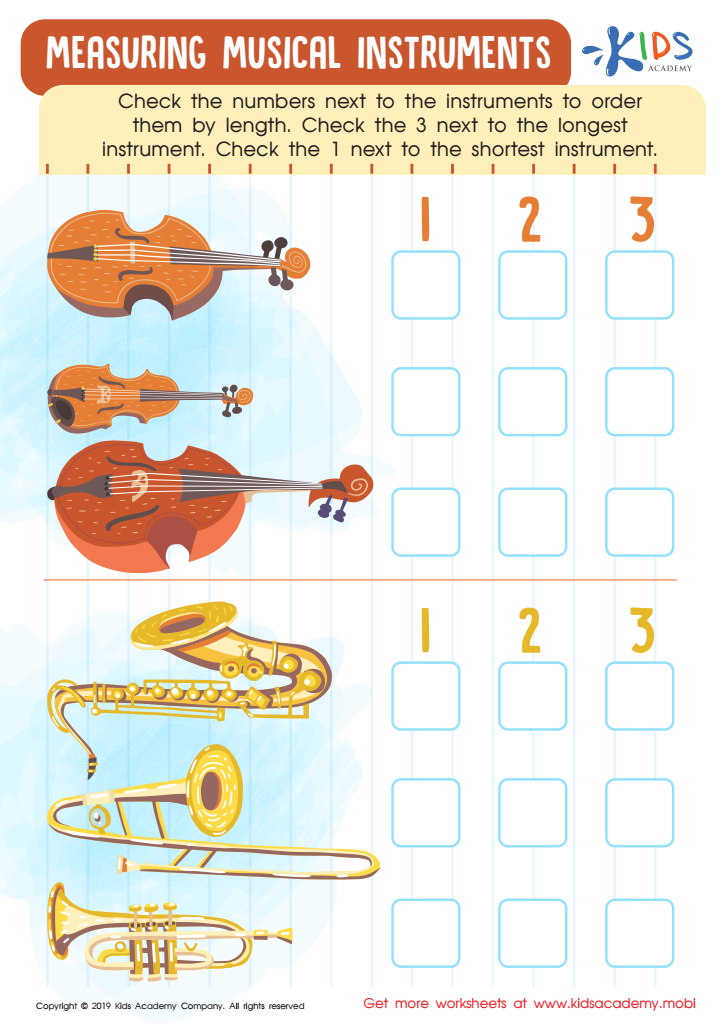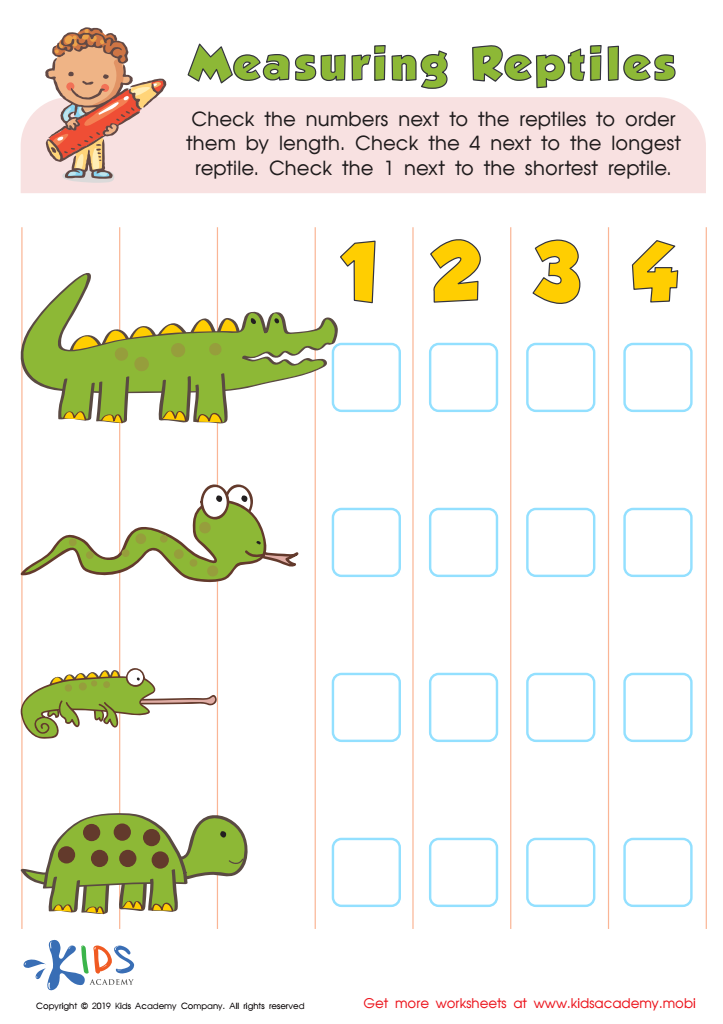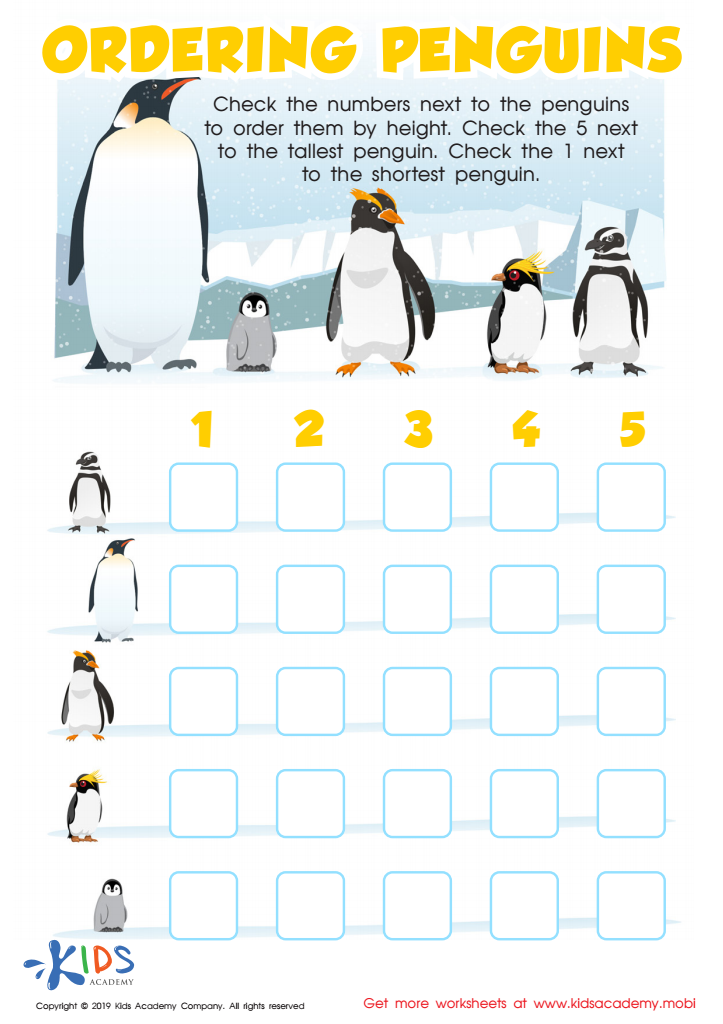Put objects in order - Lesson for Grade 1, Chapter - How to Measure Using the World Around You
In the lesson "Put objects in order," first-grade students will embark on an engaging journey through the foundational concepts of measurement and order within the context of their surrounding world. This lesson falls under the broader chapter "How to Measure Using the World Around You," which is a part of the unit on Foundations and Applications in Measuring, Time, and Data. Through activities such as the Measuring Musical Instruments Worksheet, Measuring Reptiles Worksheet, and Ordering Penguins Worksheet, students will learn to compare lengths and heights of various objects and creatures, honing their observation and analytical skills.
Understanding how to put objects in order is crucial for developing a young learner's ability to organize, categorize, and sequence information, skills that are vital in both academic and real-world scenarios. For example, being able to sequence events in time is a foundational step towards understanding history or planning daily activities. Similarly, categorizing objects by size or length can enhance a child’s mathematical reasoning and problem-solving capabilities. This lesson not only stimulates curiosity about the natural world—using animals and musical instruments as captivating subjects—but also lays down the essential cognitive groundwork for more complex mathematical concepts and practical life skills.
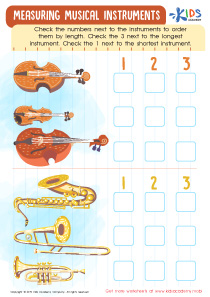
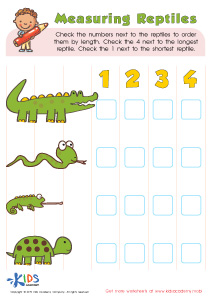
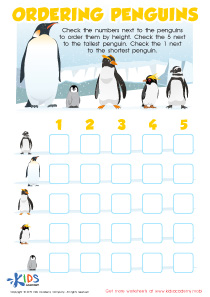
-
Activity 1 / Measuring Musical Instruments Worksheet
Learning to take proper measurements can be tricky, especially with the different metric systems we have. However, you can use simple exercises such as the one found in this worksheet to show your child how measuring things can actually be easy. Look at the instruments in the pictures. Can your kids identify them? Now, check the numbers next to the instruments to order them by length. Check the 3 next to the longest instrument and the 1 next to the shortest instrument.
-
Activity 2 / Measuring Reptiles Worksheet
Do your students know what reptiles are? If they do, ask them to give you some examples of animals which are classified as reptiles, and some of the features of reptiles. Now, in this worksheet, your kindergartners will be learning to measure with reptiles. Look at the picture and ask your students to check the numbers next to the reptiles to order them by length. Help them check the 4 next to the longest reptile, and then check the 1 next to the shortest reptile.
-
Activity 3 / Ordering Penguins Worksheet
Penguins are cute little flightless birds which live mostly in sold places, close to the sea. These birds can swim a really long distance and also survive on land. Show your kids the pictures of the penguins and this worksheet and teach them some cool facts about the birds. Then, help your kids check the numbers next to the penguins to order them by height. Check the 5 next to the tallest penguin, and check the 1 next to the shortest penguin.
